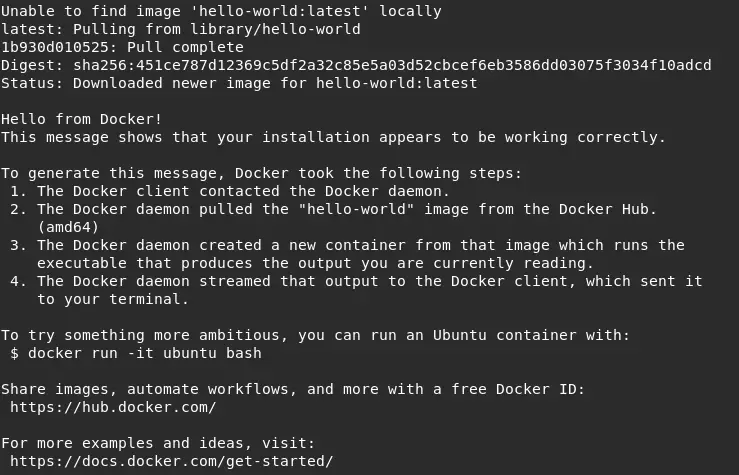

Lastly, we need to spawn an actual shell like /bin/bash so that we have an interface to interact with the container. Additionally, we need to use the -tty or -t flag to allocate a psuedo-TTY to be able to run interactive commands. Pass the -interactive or -i flag to indicate that the container’s STDIN should be opened. We need to pass in a few arguments to the docker run command to start the container with the correct configuration. To begin, start up a container using your chosen parent image. This is a good way to test ideas and validate your processes. You can run a container image with an interactive shell, perform the actions needed to get the operating system into the desired state, and then save the result. One of the easiest to to get started with is to interactively create images. There are a few different ways to create container images. Images that have common ancestry share filesystem layers, allowing for reduced overhead and greater consistency between images. Each filesystem layer represents a point-in-time record of the filesystem state after certain actions. Images are also available preconfigured for different programming languages and ecosystems.Ĭontainer images are built by applying “layers” onto previous images. Parent images are available for most popular Linux distributions, often in a variety of configurations. Most parent images typically provide a filesystem structure that resembles a minimal Linux system, package management tools, and the core functionality that you’d expect from a command line environment. Images include the filesystem layout, all of the required applications and dependencies, and configuration.Įach image is built from either a parent image (an image used as the starting point for the new image) or from an empty pseudo-image called scratch. What Are Container Images?Ĭontainer images are static bundles of files that represent everything a container runtime, like Docker, needs to run a container.
Docker run image in container how to#
In this guide, we’ll talk about how to create your own images and some of the considerations to keep in mind as you do.

Whether customizing readily available software, packaging and running internal tools, or creating images as a release medium for your own projects, creating images is a fundamental part of the container paradigm. However useful shared public images are, most users will also require custom images that define how to run their own tools and services. Viewing container images as a packaging format also allows users to take advantage of pre-built images, shared and audited publicly, to reduce development time and rapidly deploy new software. Being able to deploy applications of any kind on a standardized platform with robust tooling and low overhead is a clear advantage over many of the alternatives. HelloWorld from Java Application running in Docker.The rise of containerization has been a revolutionary development for many organizations. This executes my basic docker java image with a print statement: ~~~~ The ctr run command creates a container and executes it ctr run Į.g., ctr run docker.io/library/hello-java-app:latest v1 -rm Just running the image as a container would be sufficient for me.

Are there any docs related to ctr or containerd that could be helpful for a beginner? I am not sure on where to get the image id from. Trying to run a container asks me for the image id: ctr runĬtr: image ref must be ctr run docker.io/library/hello-java-app:latest

Now ctr i ls gives me the following output: REF TYPE DIGEST SIZE PLATFORMS LABELSĭocker.io/library/hello-java-app:latest application/.v1+json sha256:ef4acfd85c856ea020328959ff3cac23f37fa639b7edfb1691619d9bfe1e06c7 628.7 MiB linux/amd64. Now using ctr i import hello.tar I have imported it as an image. I have thus far created a docker image and exported it to. What I have learnt is ctr command plays the role of docker command to control containerd. Even the official docs are using Go lang to utilize containerd directly. So far, documentation in regards to using containerd in cli (via ctr) is very limited. This is for learning only and as a cli tool rather than with any pipelines or automation. Am exploring on how to use containerd in place of dockerd.


 0 kommentar(er)
0 kommentar(er)
